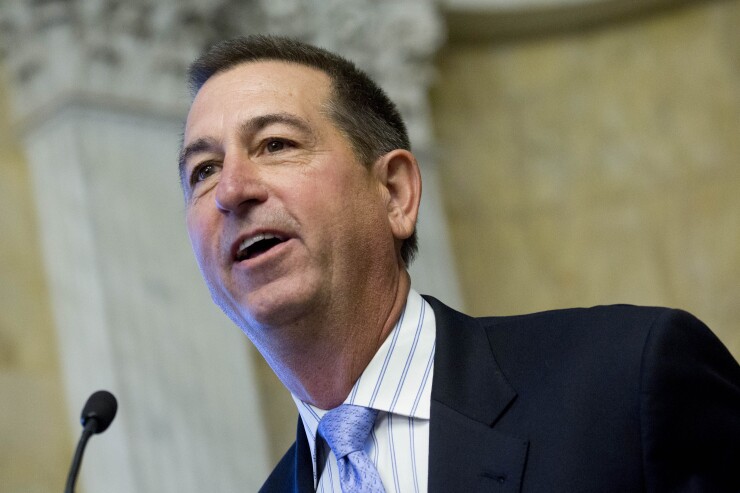With little outreach to redlined communities still left behind by Wall Street, the Trump administration recently proposed changes to the Community Reinvestment Act, a law that was intended to fix the problems caused by redlining. But these changes could further marginalize our most underserved communities.
Redlining is not ancient history. Recent investigations by
Like many laws, CRA could be improved. But it has been an important antidote to redlining and played a critical role in increasing access to fair credit for all. And now we as advocates and bankers serving the public interest have the opportunity to make it better, with the Office of the Comptroller of the Currency’s

There are three areas that raise particular concern regarding the needs of communities of color and low-income communities. We believe we can work together with the OCC to create solutions.
First, the OCC suggests combining the existing three-pronged CRA exam that grades banks on their lending, investments and services into a single metric: a ratio of a bank’s community investments divided by the bank’s assets. This single calculation would lump all of a bank’s CRA-eligible activity together. This one-size-fits-all approach may be simpler but could de-incentivize banks from making meaningful investments in particularly underserved communities and from responding to the specific, local needs of assessment areas.
In the real world, one-size-fits-all often fits no one.
The OCC also raises questions about expanding the definition of CRA-qualifying activity to include services that banks provide but that don’t address the lending needs of historically redlined communities. Giving banks CRA credit for services they already provide — such as financial education, technical assistance to small businesses or apprenticeship programs — decreases resources they should be allocating toward traditional CRA activities. Banks should increase the dollar amount of community investments in things like broadband expansion, affordable housing, accessible mortgage products for low- to moderate-income borrowers and small-business loans — and the law should encourage this, not undercut it.
A third piece of the notice seeks to redefine assessment areas. This is a direct response to pressure from banks who want CRA credit for investments they make outside of their assessment areas, relieving them of the commitment to serve their community. While the changing banking industry and emergence of fintech highlight the need to expand CRA oversight beyond physical branches — which are critical to meet the credit needs of low- and moderate-income communities and communities of color — we still need to keep the focus on low-income individuals. This issue is complex because we also know that banks make good loans outside of CRA assessment areas (which is why it is important to look at the actual loan itself, what it is doing and who it is for — not only where the loan is made). The goal here should be to give banks credit for good community development loans outside of their assessment areas, but not to incentivize them to make this a priority.
CRA must be improved. It could and should be adjusted to provide increased transparency and quantitative measures, but not at the expense of greater bank accountability. This is particularly salient for underserved communities in non-metropolitan areas, such as neighborhoods in California’s Central Valley, where branch closures and low levels of lending to people of color and low-income communities have made households susceptible to predatory lenders.
As it stands, CRA has a major shortcoming: Redlining is based on race, yet this critical anti-redlining law has no racial lens. You simply cannot adequately remedy decades of race-based disinvestment without using race-based criteria. The law could also focus more specifically on lending to low- and moderate-income borrowers, not just geographical territories. And ratings should take into account activities that harm low- and moderate-income borrowers and communities of color.
The notice from the OCC represents a crucial opportunity. Both community advocates and banks can and should weigh in to help build a stronger, more effective CRA and resist changes that would dilute it. An updated regulatory framework must account for structural inequalities the law was meant to address, something that does not require a trade-off with modernizing the regulatory regime. And we need not just carrots but a real stick in the form of penalties when banks and other financial institutions neglect their responsibilities or engage in discriminatory or criminal activity.
While much in the OCC’s initial draft raises concerns, there is an opportunity to take a good but incomplete law and make it better. Improvements to the CRA can only emerge from a process based on genuine engagement with the communities most impacted by our unbalanced economy, and the OCC’s effort falls short.





